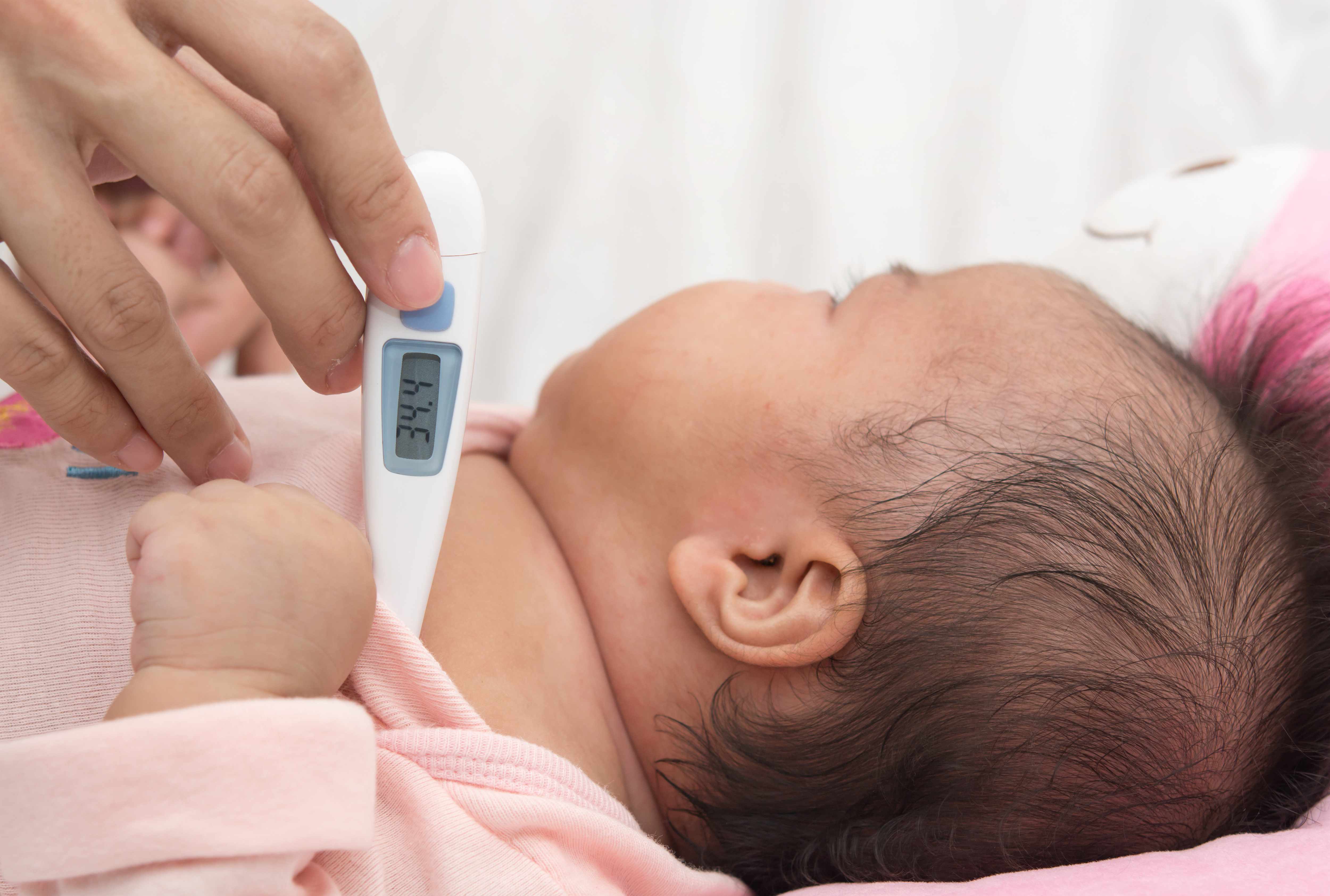-
Don’t ignore infant fevers
 Fever in an infant who is less than 3 months old is cause for concern. “A fever in this age group can be a sign of a serious bacterial infection that requires urgent medical treatment,” says Dr. Seth Gregory, a Mayo Clinic Health System pediatrician.
Fever in an infant who is less than 3 months old is cause for concern. “A fever in this age group can be a sign of a serious bacterial infection that requires urgent medical treatment,” says Dr. Seth Gregory, a Mayo Clinic Health System pediatrician.
One study identified a serious bacterial infection in 10 percent of infants with a fever between 1 day and 2 months of life. While you do not have to check a temperature on a healthy-looking infant, it is important to check a temperature on your child if there are signs of illness or you believe your child may have a fever.
How to tell if your infant is sick
Determining if an infant is ill can be difficult, but there are several signs that your infant may be sick. These signs include, but are not limited to:
- Crying and fussy ─ even after efforts to comfort them
- Hard to awaken or seems weaker and more tired than usual
- Is feeding poorly
- Feels warm to the touch
- Has a new skin rash
- Vomiting beyond the normal spitting up
- Has a cough
- Is breathing quicker or harder than usual
- Appears to have pale or yellow skin
What is a fever?
The definition of a fever is a single temperature reading of 100.4 degrees Fahrenheit or greater. However, not all methods of taking an infant’s temperature are accurate.
“Oral and temporal thermometers are not considered accurate in infants less than 3 months old, and tympanic [ear] thermometers are not recommended until 6 months old,” says Dr. Gregory.
“Pediatricians generally recommend checking a rectal temperature in infants less than 3 months old.”
How do I check a rectal temperature?
A rectal temperature is a quick, easy, accurate way to measure an infant’s temperature. To take a rectal temperature, you need a digital multiuse thermometer, cool water and some lubricant, such as petroleum jelly. Start by cleaning the end of the thermometer with cool water. Never use warm water, as it may affect the reading. Next, place a small amount of lubricant on the end of the thermometer. Place your child on his or her stomach with your hand just above his or her bottom, or place your child on his or her back and raise his or her legs up to his or her chest. Place the thermometer end one-half to one inch into the anal opening, and hold it loosely with two fingers. Keep the thermometer in place until it beeps, and then remove the device. If the thermometer reads 100.4 degrees Fahrenheit or greater, your child has a fever.
My child has a fever. What do I do next?
If your child has a fever, Dr. Gregory says, “The next step is to take your infant to the nearest emergency department. If there is a serious illness causing your child’s fever, quick diagnosis and treatment will help your child recover sooner.”
In the emergency department, the medical team will perform a physical exam and run a series of tests to identify serious causes of your child’s fevers, such as:
- Urine tests to look for urine or kidney infections
- Blood tests to look for blood infections and signs of infection elsewhere
- Chest X-ray to look for lung infections
- Lumbar puncture to look for meningitis
“It is very likely that an infant 2 months old or younger with a fever will have to spend some time in the hospital until the cause of their fever is known and is properly managed,” says Dr. Gregory. “Remember, fevers in infants 3 months old and younger are a big deal. Make sure you are checking a rectal temperature, and if the temperature is 100.4 degrees Fahrenheit or greater, your child needs to be seen as soon as possible.”
Related Articles







